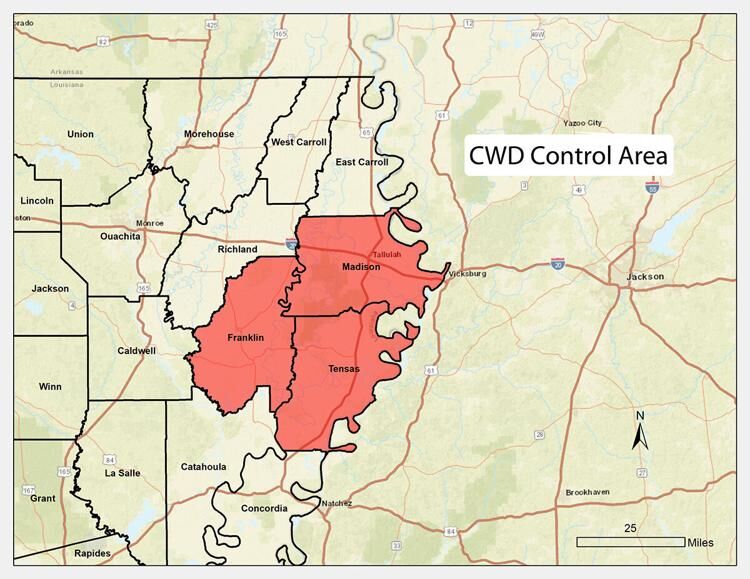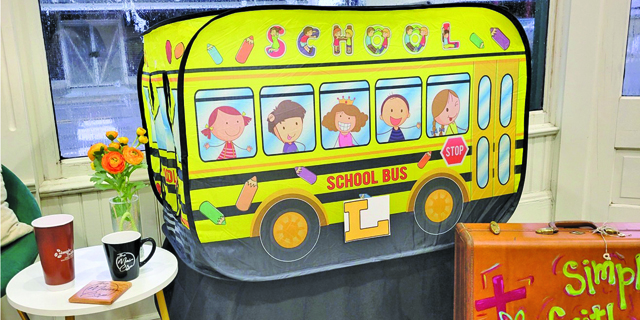LWFC’s ‘designated CWD control area’ bans supplemental feeding in 25-mile radius in La.
Published 1:00 am Sunday, July 17, 2022

- CWD Control Area
A “designated CWD Control Area” approved July 7 with a Notice of Intent by the Louisiana Wildlife and Fisheries Commission met with resistance from state legislators, police jurors and residents in the Sportsman’s Paradise.
The NOI bans supplemental feeding and carcass transportation in Franklin, Tensas and Madison parishes indefinitely in a 25-mile radius. LDWF Secretary Jack Montoucet enacted the ban shortly after the LWFC meeting.
Trending
“It is the artificial attraction of the deer. Deer have home ranges of a few acres to several thousand (acres) with ranging over their home range in search of food,” Louisiana Deer Program Manager Jonathan Bordelon said at the commission meeting. “In the case of bait that is put out, it is putting them into contact with other deer and family groups that otherwise they would not come in contact with.”
Some Teche Area deer hunters hunt in the ban area.
The LDWF has been stringent in its efforts to prevent Chronic Wasting Disease from infiltrating in Louisiana. The state has been surrounded by states with CWD cases — Texas, Arkansas and Mississippi.
Louisiana’s defense was air tight for years until a CWD-affected deer was harvested on private land in Tensas Parish near the Mississippi border, then tested positive Feb. 4 for CWD by the Louisiana Animal Disease Diagnostic Lab. Further confirmation of the disease came from the National Veterinary Services Laboratories in Ames, Iowa.
CWD is an infectious, degenerative disease of cervids (deer). CWD-infected animals do not display symptoms until the end stages of the disease and can transmit disease to other deer, which makes surveillance and testing for the disease in the deer herd very important.
While CWD has not been shown to be contagious to humans, the Centers for Disease Control and the World Health Organization recommend against human consumption of deer known to be infected with CWD. Also, it is recommended hunters hunting in areas known to harbor CWD-infected deer have their deer tested for the disease before eating the animals. LDWF provides free testing for hunter-harvested deer.
Bordelon said the infected deer in Tensas Parish had been shedding and officials did not know if it had infected other deer.
“We know that there was some environmental contamination. It had been shedding infectious material into the environment for some time. We did not know where that deer came in contact with the disease and whether or not it spread the disease to other deer in the area,” the veteran biologist said.
The ban’s economic effect spurred debate from state Sen. Stewart Cathey Jr., R-Monroe, Doyle Robinson of Mangham and Sen. Neil Riser, R-Columbia, an avid deer hunter, according to a story written by Joe Curtis and published July 13 on franklinsun.com.
“Any time you shut down or slow down hunting you are going to hurt businesses and people’s lives. And, that’s real, especially as it relates to feeding these animals,” Cathey said.
Bordelon agreed small businesses around the ban would be affected negatively. He said it is a “legitimate concern” and called the potential loss of money “significant” but deemed CWD “a threat not only to retail sales in the control area but retailed associated with economic ties to deer hunting statewide.”
Robinson also argued and said, “Banning of supplement feed alone is not going to prevent grouping or herd tendencies.”
He said the ban isn’t “going to have an impact. It’s already having an economic impact.”
Riser said, “We have so many people that come from south Louisiana. This will have an economic impact on the little feed stores and outdoor suppliers. I would ask you to have consideration when you review and look at the radius.”
He pointed out a similar ban was enacted in Morehouse and Union parishes when a CWD-infected deer was found on the Louisiana-Arkansas border. The ban lasted 33 days during the deer hunting season but did not cover a 25-mile radius but instead had a seven-mile ban.
“A deer does not know where that state line is at. We have demonstrated the seven miles already works. Narrow the ban like we did in Morehouse and Union parishes,” Riser said.
Bordelon told the commissioners the current ban’s size was a “legitimate concern” because if a portion of a parish falls within the 25-mile infected radius the entire parish is included in the ban area.
“Which means parts of some parishes are well in excess of 25 miles. (Hunters) felt they were unjustly being put into a control area when they were actually farther away in distance from some parishes adjacent to the control area that were not included,” the biologist said.
The ban and it’s 25-mile radius isn’t a popular decision but it is necessary for the well-being of future deer hunting in this state.
DON SHOOPMAN is outdoors editor of The Daily Iberian.



